- 知从木牛基础软件OBD
- 知从木牛基础软件英飞凌TC264
- 知从木牛OSEK网络管理恩智浦S32K344
- 知从木牛操作系统OS
- 知从木牛操作系统OS SC4
- TRICORE平台移植到ARM平台指导手册
- 知从木牛操作系统OS ARM CORTEX R52+
- 知从木牛基础软件英飞凌TC4X
- 知从木牛基础软件恩智浦S32K3
- 知从木牛基础软件英飞凌TLE989X
- 知从木牛AFE德州仪器BQ756506
- 知从木牛基础软件瑞萨RH850U2AX
- 知从木牛AUTOSAR软件平台英飞凌TC264
- 知从木牛基础软件杰发AC781X
- 知从木牛操作系统OS NG HYPERVISOR
- 知从木牛基础软件杰发AC7840
- 知从木牛基础软件瑞萨RH850F1KM
- 英飞凌TC3XX_Cache和Overlay功能详解
- 知从木牛基础软件芯旺微KF32A产品手册
- 知从木牛基础软件恩智浦S32K344产品
- 知从木牛基础软件紫光同芯THA6206
- 知从木牛基础软件平台
- 知从木牛AUTOSAR软件平台恩智浦S32K
- 知从木牛AUTOSAR软件平台恩智浦MPC5744P
- 知从木牛AUTOSAR软件平台英飞凌TC275
- 知从木牛SOC产品
知从木牛基础软件平台( ZC.MuNiu )为汽车电子控制器产品开发,提供完整的基础软件平台解决方案。该产品参考AUTOSAR、OSEK等国际规范。有基于AUTOSAR ARTOP架构的上位机配置工具,支持上汽、一汽、吉利、广汽、长安、长城等整车厂通讯、诊断、网络管理规范。
知从木牛基础软件平台,主要包括:操作系统、通讯协议栈(CAN\ LIN)、诊断协议栈(UDS\OBD\J1939)、网络管理(OSEK\AUTOSAR)、标定协议栈(XCP\CCP)、存储协议栈、加密模块(CRYPTO)、复杂驱动等模块,配套知从的Bootloader刷新程序和上位机工具,可以根据不同的客户项目要求进行配置和再开发。
知从科技提供基础软件产品的同时,也提供控制器基础软件功能实现的开发服务。
OBD系统(On-Board Diagnostics System)是一种车辆故障检测和诊断系统,用于监测和报告车辆排放控制系统的故障和性能。它可以通过使用车载电脑监测车辆在实际使用时排放系统的工作状况,并能监测排放系统的故障,通过点亮故障指示器(MIL)通知车辆驾驶员出现故障,同时存储故障代码识别所监测到的故障。ISO_15031-5_2016和GB18352.6-2016规定了OBD系统在车辆排放控制方面的具体要求和指导。
AUTOSAR组织成立于2003年,主要由欧洲汽车制造商、部件供应商及其他电子、半导体和软件系统公司联合建立。致力于为汽车工业开发一个开放的、标准化的软件架构;希望大家“在标准上合作,在应用上竞争”提高基础平台的稳定,降低成本,提高控制器产品开发质量和速度。2006年底发布了2.1版规范,2008年发布3.1版本开始产品化;后续逐步增加了功能安全,以太网等内容,目前广泛使用2014年后发布的4.2.1和4.2.2版本,以及4.3.1版本。
知从.木牛( ZC.MuNiu )为汽车电子控制器产品开发,提供完整的基础软件平台解决方案。该产品符合AUTOSAR、OSEK等国际规范,有基于AUTOSAR ARTOP架构的上位机配置工具,支持上汽、一汽、吉利、广汽、长安、长城等整车厂通讯、诊断、网络管理规范。该平台主要包括:操作系统、通讯协议栈(CAN\ LIN)、诊断协议栈(UDS\OBD\J1939)、网络管理(OSEK\AUTOSAR)、标定协议栈(XCP\CCP)、存储协议栈、加密模块(CRYPTO)、复杂驱动等,配套知从Bootloader刷新程序和上位机工具,可以根据不同的客户项目要求进行配置和再开发。
知从科技提供基础软件产品的同时,也提供符合ASPICE Level2和功能安全ASILB\D要求的控制器基础软件功能实现的开发服务,以及SBC芯片等软件的定制开发。
知从科技掌握AUTOSAR平台软件的开发和应用核心技术,提供本地现场支持,质量好,速度快,成本低。
OBD产品特点
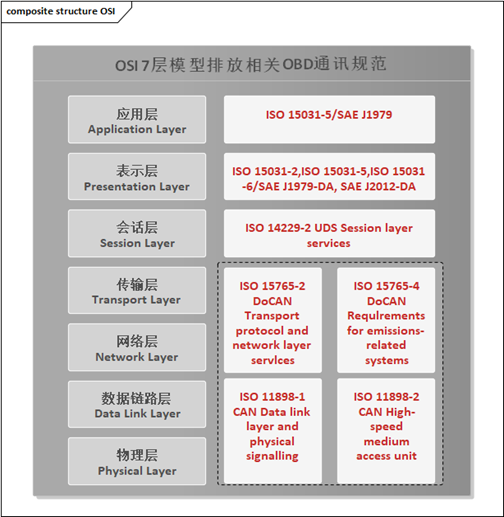
知从OBD产品按照OSI七层模型中排放相关OBD通讯规范开发。
物理层和数据链路层:定义了OBD通信所使用的物理介质和传输格式。一般使用ISO 11898规范。网络层和传输层:定义了OBD通信中的网络寻址和路由方式。在OBD中,一般使用ISO 15765-2/3/4标准。会话层:ISO 14229-2 规范在OBD会话层的作用是定义了会话管理机制、诊断服务和报文传输规范。它确保了诊断工具能够与车辆的ECU进行有效的通信,并执行相应的诊断操作。表示层:ISO 15031-2、ISO 15031-5、ISO 15031-6、SAE J1979-DA 和 SAE J2012-DA 规范在 OBD 表示层的作用主要是提供了统一的通信标准、诊断服务、故障码定义、诊断参数和报文结构,以确保诊断工具与车辆的ECU之间能够进行有效的通信和数据交换。应用层: ISO 15031-5 规范在应用层的作用是提供了一套标准的诊断服务、数据交换格式和会话管理机制,确保诊断工具与车辆的ECU之间能够进行有效的通信。
OBD产品具有以下特点:
Ø 排放监测和诊断:
OBD产品能够实时监测排放数据和诊断车辆的各种参数和系统状态。可以读取和解析故障码,提供即时的故障诊断结果,帮助用户快速定位和解决车辆故障。
Ø 多功能和全面性:
OBD产品包括故障诊断、性能监测、燃油经济性评估、驾驶行为监测等。能够提供全面的车辆信息和反馈,满足用户在维修、改进和管理方面的需求。
Ø 实时数据和报警:
OBD产品能够实时获取并显示车辆的各种参数,如车速、发动机转速、冷却液温度等。
总体而言,汽车OBD产品具有实时监测排放数据和诊断、多功能和全面性、实时数据和报警、实时数据和报警等特点。这些特点使得OBD产品成为车辆维修、性能优化、驾驶安全和行车管理等方面的重要工具。
配置工具
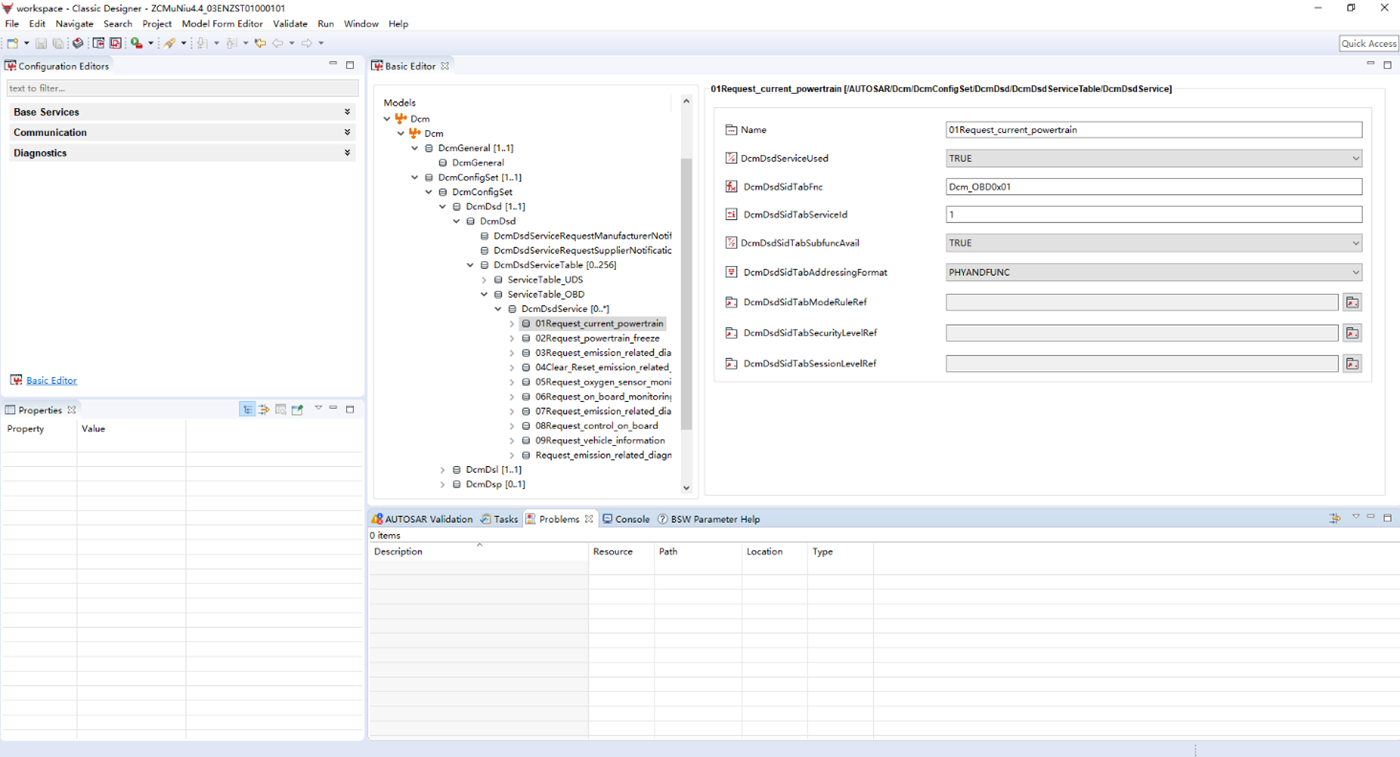
木牛配置工具主界面
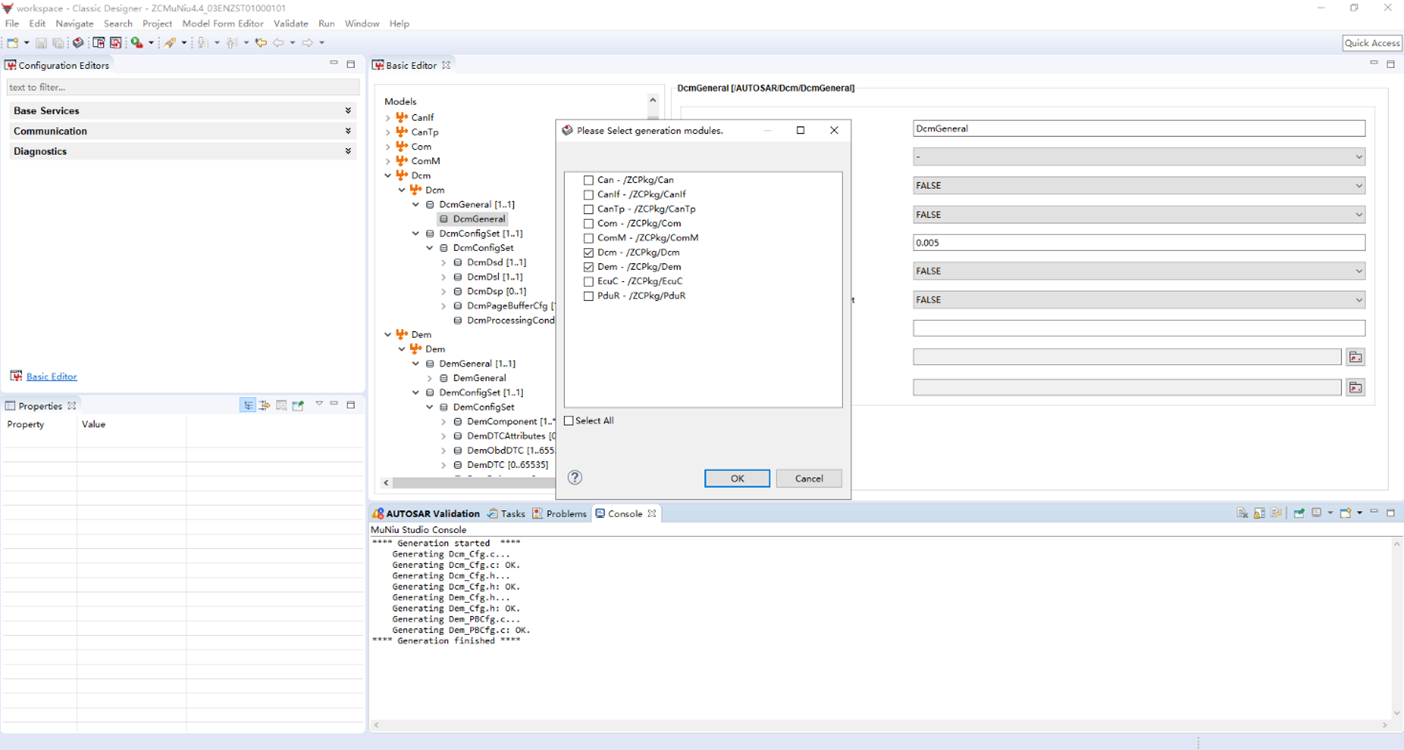
木牛配置工具生成代码
为了满足客户的不同项目需求,提高基础软件平台的扩展性, 木牛基础软件平台实现了各个模块可配置性,并且实现了配置工具。客户可根据不同需求,在配置工具上完成各个模块的配置工作,可生成配置代码文件,将生成的配置文件集成到工程中即可。
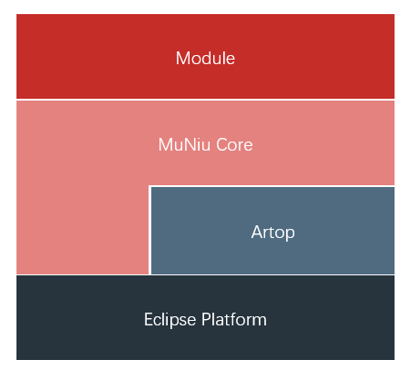
木牛配置工具架构
木牛基础软件平台的配置工具是基于Eclipse平台,并基于ARTOP架构,实现AUTOSAR模型和ARXML的解析。MuNiu Core完成配置工具的UI界面,在MuNiu Core之上的Module,实现AUTOSAR各个模块的配置。配置完成后,可生成各个模块的配置代码。
过程文档
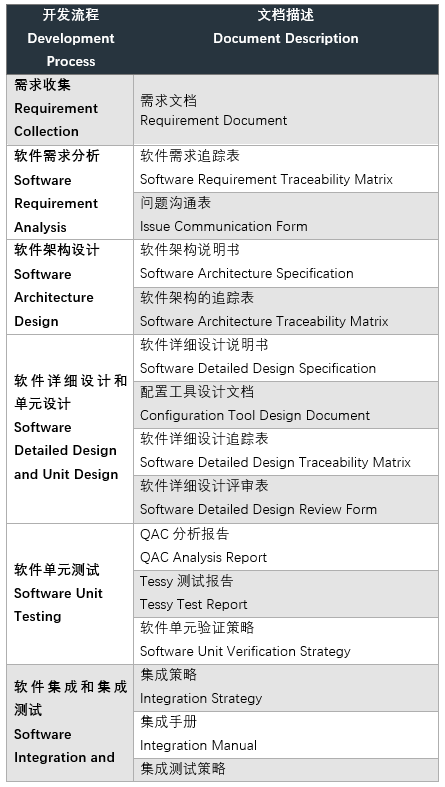
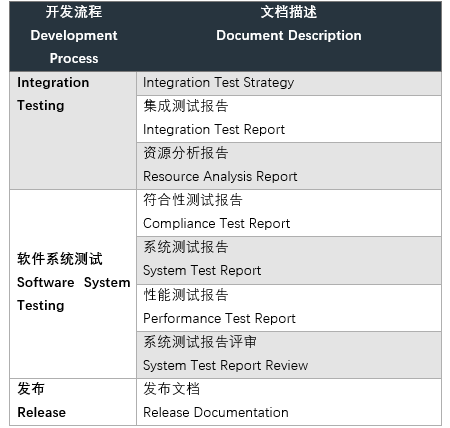
汽车OBD(On-Board Diagnostics)是车辆上的诊断系统,用于监测和报告车辆排放控制系统的故障和性能。OBD产品广泛应用于以下领域:
Ø 发动机管理系统(EMS)
Ø 变速器控制器(TCU)
Ø 制动控制器(BCU)
Ø 电机控制器(MCU)
Ø 电子驻车系统(EPB)
Ø 电池管理系统控制器(BMS)
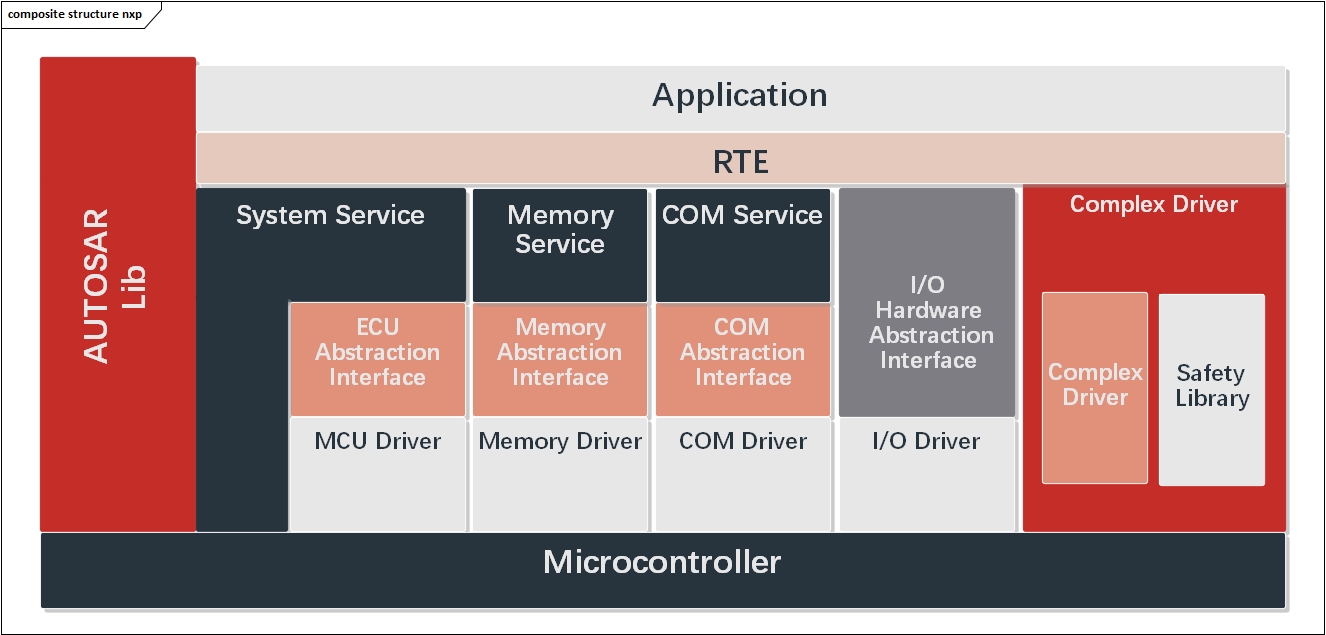
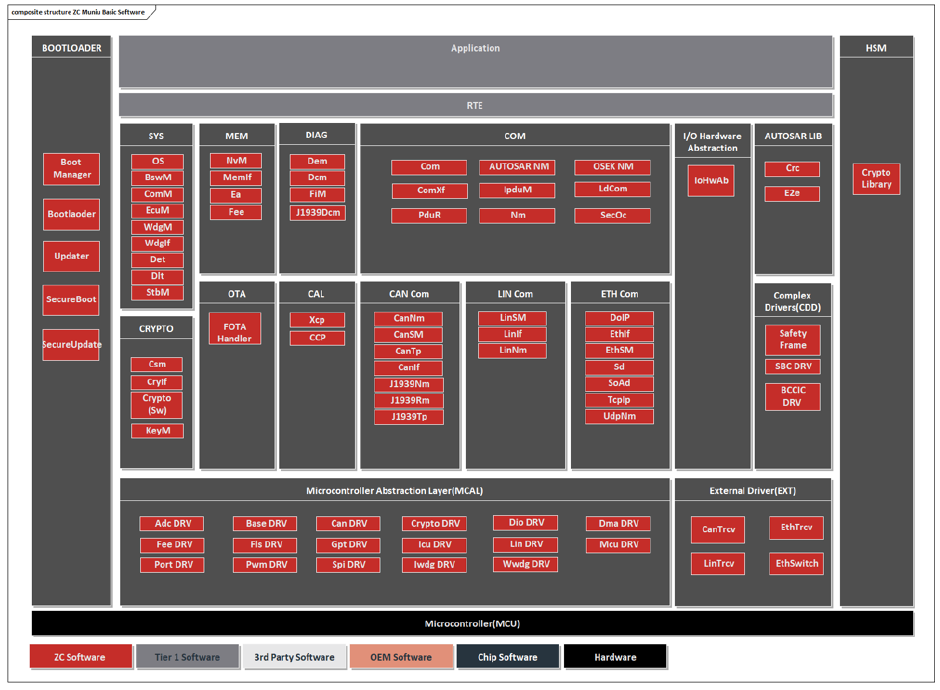

木牛软件著作权登记证书

点击下载产品手册